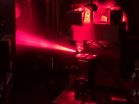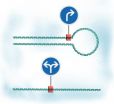(Press-News.org) BLOOMINGTON, Ind. -- A new research study led by an Indiana University professor has found that social bullying is just as prevalent in children's television as depictions of physical aggression.
The study, "Mean on the Screen: Social Aggression in Programs Popular With Children," which appears in the Journal of Communication, found that 92 percent of the top 50 program for children between the ages of two and 11 showed characters involved in social aggression.
On average, there were 14 different incidents of social aggression per hour - or once every four minutes.
While physical aggression in television for children has been extensively documented, this is believed to be among the first studies to analyze children's exposure to behaviors such as cruel gossiping and manipulation of friendship.
"Social aggression was more likely to be enacted by an attractive perpetrator, to be featured in a humorous context and neither rewarded or punished," wrote Nicole Martins, assistant professor of telecommunications in the IU College of Arts and Sciences. "In these ways, social aggression on television poses more of a risk for imitation and learning than do portrayals of physical aggression."
Martins, the lead researcher on the study, and Barbara Wilson, professor of communication at the University of Illinois, conducted a content analysis of the 50 most popular children's shows according to Nielsen Media Research between December of 2006 to March of 2007. In all, 150 television shows were viewed and analyzed.
Careful attention was given to what was portrayed in the cases of social aggression, whether the behavior was rewarded or punished, justified, or committed by an attractive perpetrator.
The findings suggest that some of the ways in which social aggression is contextualized make these depictions particularly problematic for young viewers.
"These findings should help parents and educators recognize that there are socially aggressive behaviors on programs children watch," Martins said. "Parents should not assume that a program is okay for their child to watch simply because it does not contain physical violence.
"Parents should be more aware of portrayals that may not be explicitly violent in a physical sense but are nonetheless anti-social in nature," Martins added.
The vast majority of socially aggressive incidents - 78 percent - was verbal; words to hurt the self-esteem or social standing of another character on the program. The most common types of social aggression were insults (52 percent) or name-calling (25 percent). Other common types of negative behavior shown were teasing (10 percent) and sarcasm (9 percent).
Only about 20 percent of all socially aggressive incidents were non-verbal in nature and typically employed a mean face (36 percent) or laughter meant to lower the self-esteem of another character (31 percent). Rolling eyes, finger pointing and simply ignoring the other person also were common.
"We also coded whether social aggression was directly perpetrated at the target - such as making a mean face - or indirectly perpetrated behind the target's back - such as spreading a rumor," the authors wrote. "The vast majority of socially aggressive incidents (86 percent) were enacted directly at the target. Rarely were socially aggressive incidents perpetrated behind the target's back."
While previous research has demonstrated that gossip is one of the most common forms of social aggression in real life, it was rarely seen in children's television shows analyzed for the study. Martins and Wilson concluded that gossip, due to its indirect nature, may have been seen by program producers as being too subtle for advancing a story's plot.
###Editors: Electronic copies of this study are available from George Vlahakis at vlahakis@iu.edu or 812-855-0846.
IU research study finds social bullying prevalent in children's television
2012-09-28
ELSE PRESS RELEASES FROM THIS DATE:
Study: Exposure to herbicide may increase risk of rare disorder
2012-09-28
HOUSTON – (Sept. 28, 2012) – A common herbicide used in the United States may be linked to an increased risk of a congenital abnormality of the nasal cavity known as choanal atresia, say researchers at Baylor College of Medicine and other Texas institutions.
The study by Dr. Philip Lupo, assistant professor of pediatrics – hematology/oncology at BCM and Texas Children's Cancer Center, is scheduled for publication in The Journal of Pediatrics.
Choanal atresia is a disorder where the back of the nasal passage is blocked by tissue formed during fetal development. It is ...
Eating cherries lowers risk of gout attacks by 35 percent
2012-09-28
A new study found that patients with gout who consumed cherries over a two-day period showed a 35% lower risk of gout attacks compared to those who did not eat the fruit. Findings from this case-crossover study published in Arthritis & Rheumatism, a journal of the American College of Rheumatology (ACR), also suggest that risk of gout flares was 75% lower when cherry intake was combined with the uric-acid reducing drug, allopurinol, than in periods without exposure to cherries or treatment.
Previous research reports that 8.3 million adults in the U.S. suffer with gout, ...
Local funding leads to big things in parrot genomics
2012-09-28
September 28, 2012, Hong Kong, China – The international open-access journal GigaScience (a BGI and BioMed Central journal) announces the publication of a unique study providing the genome sequence of the critically endangered Puerto Rican Parrot (Amazona vittata) by Taras Oleksyk and colleagues at the University of Puerto Rico-Mayaguez. The sequencing and analysis of the genome of the only surviving native parrot in US territory provides numerous benefits for avian genetics, conservation studies, and evolutionary analyses. What is remarkable here, and highlighted in an ...
Big science: Local funding supports open-access sequencing of the Puerto Rican Parrot genome
2012-09-28
The critically endangered Puerto Rican Parrot (Amazona vittata) is the only surviving parrot species native to the United States. A genomic sequencing project, funded by community donations, has published today, in BioMed Central and BGI's open access journal GigaScience, the first sequence of A. vittata, the first of the large Neotropical Amazona birds to be studied at the genomic level.
The Puerto Rican Parrot was once abundant throughout Puerto Rico but destruction of old forest habitats to make way for farming in the 19th Century resulted in a drastic decline in their ...
Ancient stinging nettles reveal Bronze Age trade connections
2012-09-28
A piece of nettle cloth retrieved from Denmark's richest known Bronze Age burial mound Lusehøj may actually derive from Austria, new findings suggest. The cloth thus tells a surprising story about long-distance Bronze Age trade connections around 800 BC. The findings have just been published in Nature's online journal Scientific Reports.
2,800 years ago, one of Denmark's richest and most powerful men died. His body was burned. And the bereaved wrapped his bones in a cloth made from stinging nettle and put them in a stately bronze container, which also functioned as urn.
Now ...
The true costs of cancer in Europe revealed
2012-09-28
Vienna, Austria, 28 September 2012 – New studies that reveal for the first time the real economic and human costs of caring for cancer patients in Europe will be presented during the ESMO 2012 Congress of the European Society for Medical Oncology in Vienna.
"Here we have two studies of enormous importance," noted Prof Peter Boyle, President of the International Prevention Research Institute in Lyon, France, Member of the ESMO Faculty group on Cancer Prevention, who was not involved in the studies. "It is essential to have knowledge of the total costs of cancer and Dr ...
'Carmaheaven': Closure of 405 in 2011 improved air quality up to 83 percent
2012-09-28
Take the time to enjoy a deep breath next weekend when the 405 freeway closes for Carmageddon II. If it's anything like last year, the air quality is about to get amazing.
In study findings announced Sept. 28, UCLA researchers report that they measured air pollutants during last year's Carmageddon (July 15) and found that when 10 miles of the 405 closed, air quality near the shuttered portion improved within minutes, reaching levels 83 percent better than on comparable weekends.
Because traffic dipped all over Southern California that weekend, air quality also improved ...
Electrons confined inside nano-pyramids
2012-09-28
Quantum dots are nanostructures of semiconducting materials that behave a lot like single atoms and are very easy to produce. Given their special properties, researchers see huge potential for quantum dots in technological applications. Before this can happen, however, we need a better understanding of how the electrons "trapped" inside them behave. Dresden physicists have recently observed how electrons in individual quantum dots absorb energy and emit it again as light. Their results were recently published in the journal "Nano Letters".
Quantum dots look like miniscule ...
Loop the loop, DNA style
2012-09-28
In certain toy racecar tracks, sneaky players can flip a switch, trapping their opponents' vehicles in a loop of track. Cells employ a less subtle approach: they change the track's layout. In a study published online today in Science, scientists at the European Molecular Biology Laboratory (EMBL) and Oxford University discovered that, by forming or undoing gene loops, cells manipulate the path of the transcription machinery – which reads out instructions from DNA – controlling whether it moves along the genetic material in one direction or two.
"We found that gene loops ...
Nanosciences: All systems go at the biofactory
2012-09-28
In order to assemble novel biomolecular machines, individual protein molecules must be installed at their site of operation with nanometer precision. LMU researchers have now found a way to do just that. Green light on protein assembly!
The finely honed tip of the atomic force microscope (AFM) allows one to pick up single biomolecules and deposit them elsewhere with nanometer accuracy. The technique is referred to as Single-Molecule Cut & Paste (SMC&P), and was developed by the research group led by LMU physicist Professor Hermann Gaub. In its initial form, it was only ...



